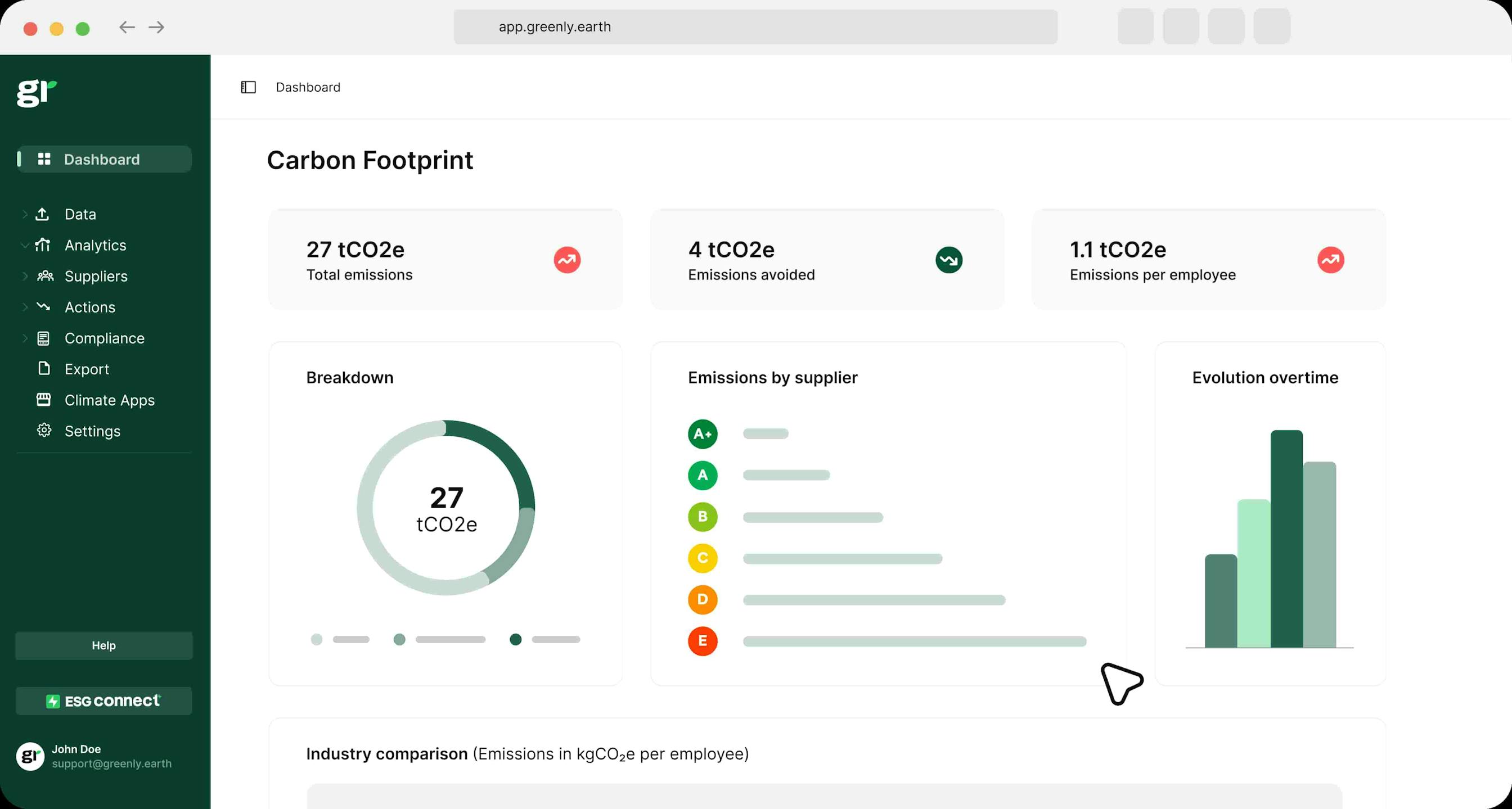
Sustainable Development Goals (SDGs): All You Need to Know
The United Nations has defined 17 goals, aimed at creating a better world. What are these so-called "Sustainable Development Goals" ? Explanations.
ESG / CSR
Industries



Healthcare is a universal topic despite how countries around the world handle health insurance, health coverage, and medical care is in different manners.
💡 In countries such as the United States, some may view the US healthcare system as an exorbitant cost no matter which way the cloth is cut – as inflation continues to skyrocket and any healthcare related expenses are known to be expensive in the country.
However, has thought ever arisen that the price of healthcare, medical bills, and a seemingly shortage of healthcare workers could be rising due to global warming?
In this article, we'll explain how global warming affecting the cost of healthcare and who may be impacted as a result of uninsured patients and limited access to private insurance.
Healthcare is referred to as the system used to monitor and take care of one’s health, and can be most easily viewed as an ecosystem – and each patient is a component of that ecosystem bound to have different healthcare needs in order to thrive.
Different countries approach healthcare differently, but in general, there are two types of healthcare: public healthcare and private healthcare. The United States mostly functions on a privatized healthcare system, where Americans act as private payers, able to choose their own healthcare providers – but must pay the price according to their provider of choice.
💡 This is one of the many reasons that Americans will seek jobs that provide dental, eye, and healthcare services or insurance in order to offset the exorbitant cost of healthcare – as the cost of prescription drugs can easily add up.
Other countries on the other hand, such as those with a more socialist approach to healthcare like Australia or Germany – will use a public healthcare system, where all residents are entitled to a baseline of healthcare coverage and will often be reimbursed for their required healthcare services. While this may seem most cost effective to most Americans, the problem is that public healthcare will not allow for the same privacy that private healthcare will.
👉 For instance, citizens of these countries where public healthcare is the norm may be required to complete various health tests to ensure they do not carry certain diseases in order to remain residents of those countries – whereas in countries like the U.S., no one is obligated or required to complete any doctor or healthcare visits.


Unlike countries like France or elsewhere in Europe where healthcare is socialized and provides similar reimbursements for all residents of that country – healthcare in the United States is inevitably a little more complicated given its motto of freedom and independence, and how the U.S. was colonized in the first place.
💡 Before explaining why healthcare in the U.S. functions the way it does today, here’s a short background on healthcare in the U.S. with a history lesson.
When settlers first came to the United States, few doctors migrated as well – making medical professionals sparse in the U.S. until medical schools opened in cities like New York and Philadelphia. Hospitals weren’t built on a larger scale until the Civil War, where only then it became a necessity in order to treat wounded soldiers.
👉 This is also when the United States began to create government incentives to ration supplies such as clean water to fight diseases like tuberculosis, which was raging at the time.
To put things into perspective, most Americans are eligible to remain under their parents healthcare insurance until the age of 26 – but many young Americans will go years in between their parents healthcare coverage and finding their own due to the fact most young employees in the United States simply can’t afford to pay for healthcare.
👉 Add the calamity of climate change impacting the price of healthcare, and millions of more Americans will be left uncovered and vulnerable.


When most think of global warming, the first thing that comes to mind is how the planet is suffering – not the people who are living on it.
💡 However, the problem with climate change that most fail to realize is that the negative impacts of global warming can also have an affect on human health.
For example, the Clean Air Act was implemented in order to avoid toxic air pollutants and to improve the overall air quality across the country. While this program has proven successful in avoiding over 200,000 deaths due to poor air quality, the Clean Air Act needs to be adjusted in accordance with rising emission levels in order to remain effective.
The act was adjusted in 1990, as emissions have inevitably been on the rise since then – and it isn’t just industrial activity that has impacted air quality and human health. Large bodies of water that are drying up such as the Great Salt Lake continue to emit harmful toxins that pose a risk for those with respiratory diseases, such as asthma. Special attention for people with these types of respiratory diseases would not be as necessary if it weren’t for the consequences of climate change and the continued release of harmful toxins into the atmosphere.
💡 In fact, the impact of global warming on the price of healthcare was revealed by just how much money was spent in healthcare due to air pollution and the use of fossil fuels.
Healthcare in the United States operates on almost an exclusively private system, meaning that it is the responsibility of each American to choose their own healthcare provider and pay the expenses associated with their provider of choice. This is a dissimilar approach to socialist countries, where their taxes are being used to pay for their healthcare – and where all citizens are given a baseline of health care despite the differences in their economic statuses.
👉 The scientific evidence of recent years reveals that the cost of healthcare will continue to rise if the environmental crisis at hand continues to spiral out of control – meaning some sort of reform for health care in the U.S. has to be implemented to prevent Americans from going more into debt than most already are.
The table below will compare and contrast healthcare in different countries:
| Country | Healthcare System Type | Funding Source | Key Features | Challenges |
|---|---|---|---|---|
| United States | Mixed (private/public) | Private insurance, Medicare, Medicaid | High-quality care for insured, innovative technology | High costs, many uninsured or underinsured |
| France | Universal | Mandatory health insurance, taxes | Accessible care, low out-of-pocket costs | Aging population, rising costs |
| Australia | Universal (Medicare) | Taxes, private insurance for extras | Free public hospital care, subsidies for services | Wait times in public system |
| Brazil | Universal (SUS) | Government-funded | Free healthcare for all citizens | Underfunding, long wait times |
| India | Mixed | Government and private | Low-cost private options, government schemes | Unequal access, rural disparities |
| China | Universal (social health insurance) | Government subsidies, employer/employee contributions | Expanding rural healthcare, affordable drugs | Quality gaps, urban-rural disparity |
| Germany | Universal (social health insurance) | Employer and employee contributions | Comprehensive coverage, choice of insurers | Aging population, cost pressures |
| United Kingdom | Universal (NHS) | Taxes | Free care at point of use | Funding shortages, long wait times |


Global warming is undoubtedly making healthcare more costly, such as how as the risk of respiratory diseases will continue to increase alongside deteriorating air quality – but Trump’s re-election could pose serious risks to the environment alongside healthcare.
💡Since Trump has based his presidency around “drilling” to boost the economy, publicized healthcare will be put on the back-burner – while efforts to improve the economy under the Trump administration could continue to warm the planet, cause a spike in natural disasters, and ultimately – cause new health issues amongst Americans.
Here are some of the reasons why healthcare will become even more expensive under the Trump administration:
👉 Ultimately, Trump’s plans to eliminate the Affordable Care Act (ACA) and to ramp up the production of fossil fuel projects and drilling could worsen air quality, limit resources, and make healthcare even more costly in the United States.

Given the U.S. functions primarily on a private healthcare system, it makes sense how global warming could impact the healthcare system and increase the cost of various healthcare providers – as those providers are not subsidized by the government the way healthcare is in other countries of the world.
Another way to understand the difference in resilience between public and private healthcare systems is the difference between public and instate universities and how they are funded.
Think of an instate university like public healthcare systems that are shown in socialist countries. In the U.S., the in-state taxes that Americans pay help to feel their public education system – including large public universities that are in state.
👉 Therefore, someone that lives in the state of Maryland is contributing to the University of Maryland’s funding – meaning that the school is unlikely to lack the resources necessary to continue providing education at the rate that it is given it is also being fed financially by the residents of that state.
On the other hand, think of private health care like a private university in the U.S., such as American University in Washington D.C. – where this school is indeed dependent on the enrollment of students to keep the school running. If something happens to prevent as many students from enrolling as previous years, the tuition will have to increase to keep up with the resources currently available and provided by the school. The same happens with healthcare in the U.S., where the resources to aid the health issues caused by global warming are already sparse – and supply cannot meet the demand, causing an increase in the price of healthcare.
💡 The University of Maryland is ultimately more resilient to financial setbacks or lack of enrollment than the American University in Washington D.C. is likely to face. The same concept goes for public healthcare systems as opposed to private healthcare systems – while privatized healthcare coverage may provide the user with more freedom in their healthcare choices, it isn’t likely to remain unaffected by global crises such as climate change.


There are two clear ways to make healthcare more affordable across the United States: to help fight against climate change and reduce the current global surface temperatures, or to implement a system that takes a socialized approach to healthcare.
💡 In a perfect world, both are prioritized – but the efforts to reduce global warming to avoid skyrocketing healthcare costs in the U.S. could take years to manifest into the system.
The Biden administration has already taken an effort to reduce the costs of goods and healthcare services with the Inflation Reduction Act of 2022, which is also known to act as an environmental incentive to push the transition towards the use of clean energy by encouraging Americans to purchase more energy efficient or eco-friendly technologies, cars, and household appliances.
More specifically, the Inflation Reduction Act of 2022 seeks to make the cost of healthcare more affordable for Americans by putting a limit on various co-payments, ending cost-sharing for vaccines, and by preventing out-of-pocket costs from exceeding $2,000. It may not sound like much for those already developed in public healthcare systems, but it’s most certainly a start.
Another thing the U.S. could do to help Americans with the rising price of healthcare due to global warming is by re-implementing the Patient Protection and Affordable Care Act, more commonly known as ObamaCare – which if successfully implemented in the past, may have helped to stabilize prices of healthcare.
💡 This is because Obamacare served as a public healthcare system for Americans to encourage low-income Americans to subscribe to this version of health insurance so that they would remain under some sort of coverage, even when “regular” healthcare was out of their economic reach.
Ultimately, healthcare in the U.S. will continue to rise regardless of global warming – but that isn’t to say that taking part in the fight against climate change is meaningless to our health. It is important to reduce global warming to rectify the current healthcare system, but more importantly to prevent compromising our livelihood.
If reading this article about how global warming is increasing costs has made you interested in reducing your carbon emissions to further fight against climate change – Greenly can help you!
Book a demo today to see how Greenly can help you with various sustainable investments and manage your finances alongside your climate journey.
Greenly can help you make an environmental change for the better, starting with a carbon footprint assessment to know how much carbon emissions your company produces.
